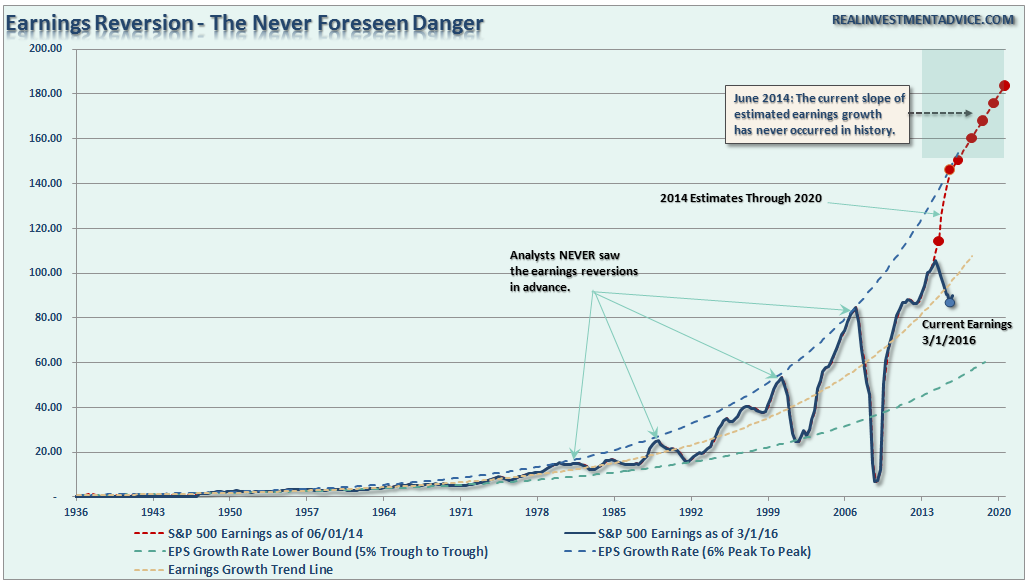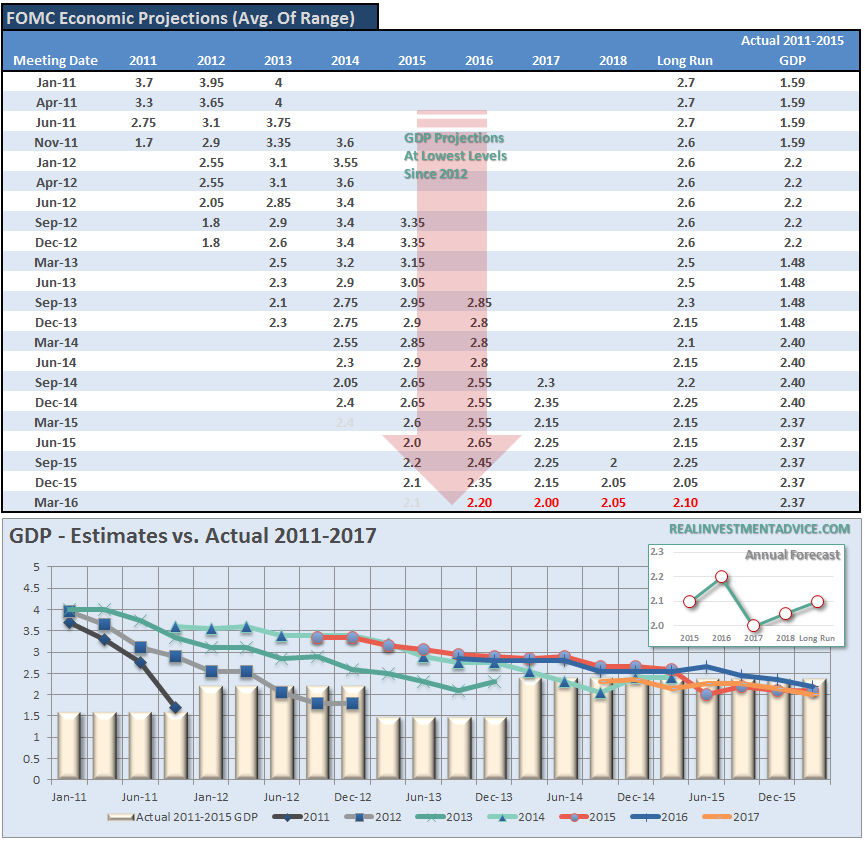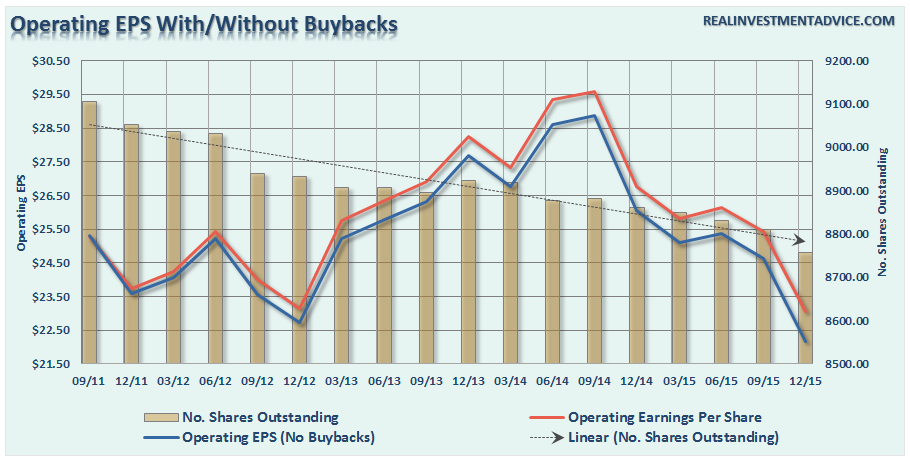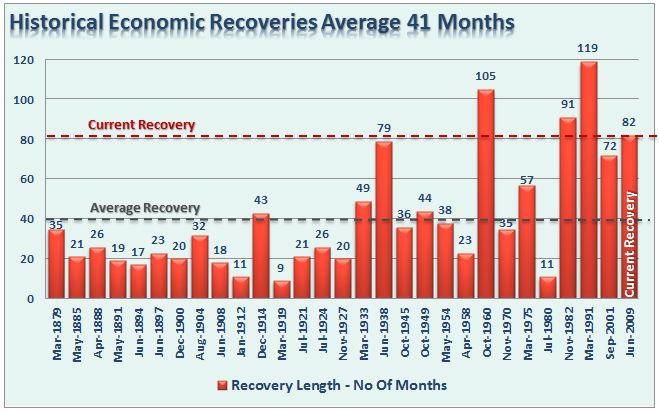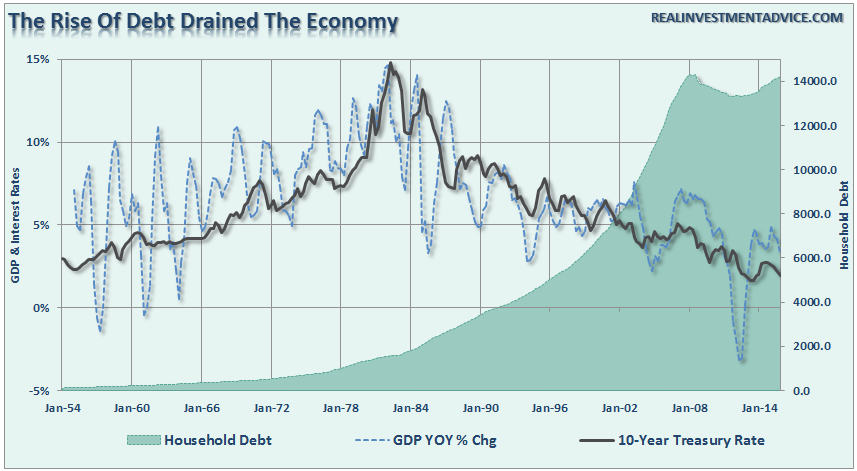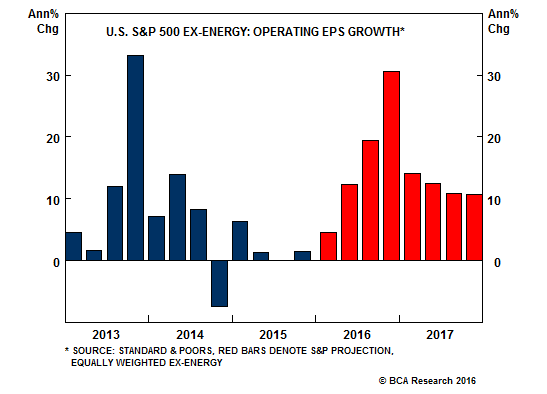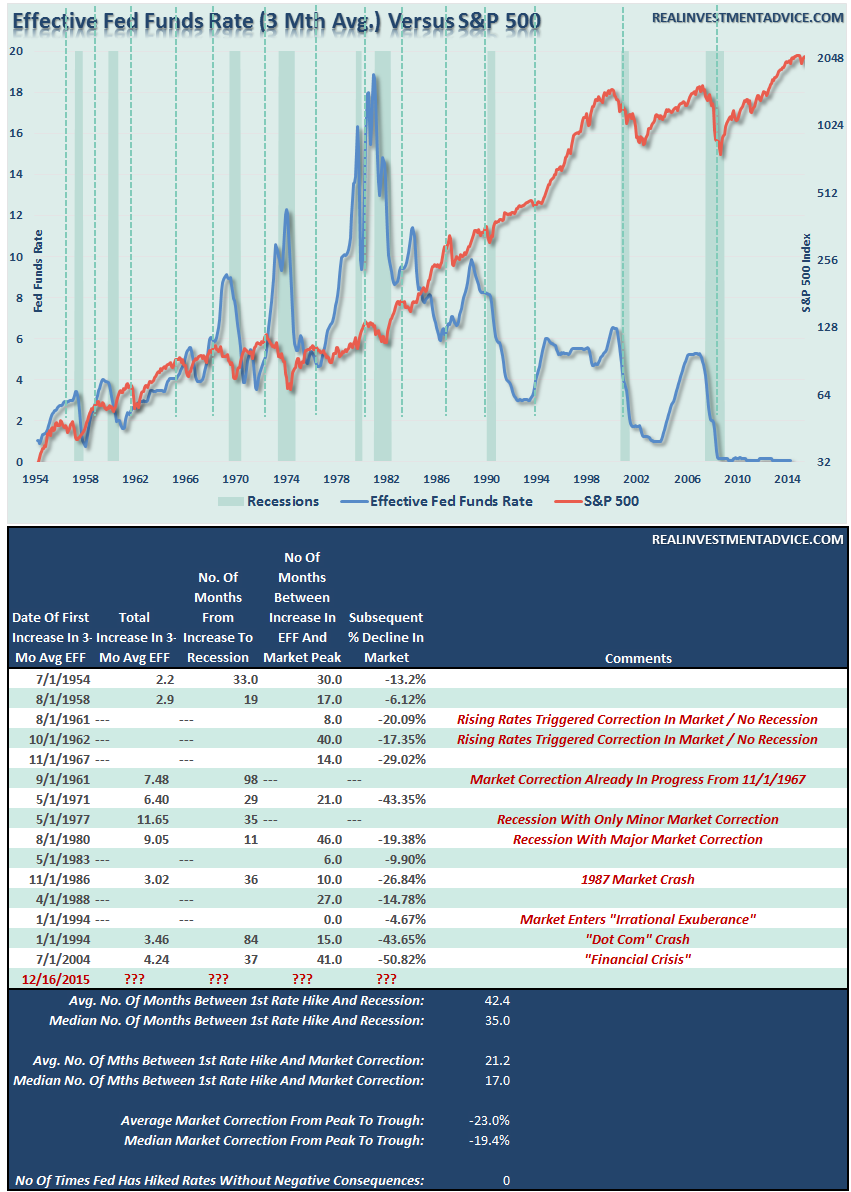It’s been more than seven years since the financial crisis and Central Banks globally have kept their rates at record lows, and have even ventured into negative rate territory, to stave off the threat of a recessionary relapse and boost anemic economic growth. While such policies have failed to spark inflationary pressures or boost economic growth, the “illusion of permanent liquidity” has spurred investors to make risky bets and push up asset prices.
This “illusion” has not only been driving investors to make risky bets across the entire spectrum of asset classes; it has also led to the illusion of economic stability and growth. For example, in 2014, financial analysts started pushing the idea of a “new generational cycle” of growing earnings driven by a stronger economic growth that would last for another decade. Unfortunately, as we are now witnessing, such rosy projections have fallen far short of reality.
Even the Federal Reserve’s own forecasts have fallen well short of reality. As I discussed previously:
“As shown in the chart below, once again the Fed lowered expectations further for economic growth and reduced the number of rate hikes this year from 4 to 2. Yep, ‘accommodative policy’ is here to stay for a while longer which lifted stocks yesterday’s close.”
“Besides being absolutely the worst economic forecasters on the planet, the Fed’s real problem is contained within the table and chart above. Despite the rhetoric of stronger employment and economic growth – plunging imports and exports, falling corporate profits, collapsing manufacturing and falling wages all suggest the economy is in no shape to withstand tighter monetary policy at this juncture.”
While Central Banks globally are working to “repeal” the economic cycle, the continued deterioration in economic growth has become more prevalent as even ongoing accounting manipulations, share buybacks, and cost cutting are no longer boosting bottom-line earnings.
Of course, such an outlook was ALWAYS overly optimistic and fraught with peril as such an economic expansion would rival the longest previous period on record (119 Months) from March of 1991 through March of 2001 during the “technological revolution.”
Such a prolonged expansion will be quite a feat if it were to occur, particularly given an economy growing at half the rate it was during the 1990’s. Furthermore, given that a bulk of the economic expansion during the 1980-90’s was driven by an $11 Trillion dollar increase in consumer credit, there is little ability to repeat such a “tailwind” currently.
However, the idea of “permanent liquidity,” and the belief that economic growth can be sustained by monetary policy alone, despite slowing in China, Japan, and the Eurozone, has emboldened analysts to continue to expect a resurgence of profit growth in the months ahead. As I noted in this past weekend’s newsletter:
From BCA Research:
“However, leading economic indicators remain bearish, and the slide in the monetary base warns that the path of least resistance for GDP growth is lower. History shows that once GDP growth dips below the level of 10-year Treasury yields, a prolonged slump in stocks typically ensues.
This outlook contrasts starkly with current expectations. The Chart below shows that an aggressive recovery in S&P 500 earnings is expected this year.”
“Importantly, these expectations are not simply a reflection of hopes for a recovery in resource prices, but are broad-based across sectors. That is wildly optimistic, underscoring that disappointment will remain a key risk.”
It is unlikely given the current scenario of sub-par economic growth, excess labor slack globally and deflationary pressures rising, that such lofty expectations will be obtained. Importantly, it will be the consequences of such a failure that will be the most important as the longer the music plays the more deafening the silence will be that follows.
There is a rising realization by Central Banks these excess liquidity flows have failed to work as anticipated. The Bank of Japan’s foray into a “quantitative easing” program nearly 3x the size of that of the Federal Reserve’s last endeavor, or a relative basis, was met with nothing but an ongoing drop in economic growth. Domestically, the Federal Reserve’s program has boosted asset prices that has inflated the wealth of the top 10% but left the bottom 90% in arguably a worse financial position today than five years ago. (see “For 90% of Americans There Has Been No Recovery”)
But what ongoing liquidity interventions have accomplished, besides driving asset prices higher, is instilling a belief there is little risk in the markets as low interest rates will continue or only be gradually tightened.
However, it is a common mistake is to take unusually low volatility and risk spreads as a sign of low risk when, in fact, they are a sign of high risk-taking.
The ongoing mistake currently being made by the vast majority of Wall Street analysts is two-fold. The first is the assumption that the Federal Reserve can normalize interest rates given the underlying deterioration in global growth currently. The second is that increases in interest rates will have ZERO effect on future earnings or economic growth.
As I discussed repeatedly in the past, there has been no previous point in history where rising interest rates did not only slow the economy, but eventually led to an economic recession, market dislocation or both.
“While rising interest rates may not “initially” drag on asset prices, it is a far different story to suggest that they won’t. This is particularly the case when those rate increases are coming from a period of very low economic growth.
What the mainstream analysts fail to address is the ‘full-cycle’ effect from rate hikes. The chart and table below address this issue by showing the return to investors from the date of the first rate increase through the subsequent correction and/or recession.”
The “Illusion of Permanent Liquidity” has obfuscated the underlying inherent investment risk that investors are undertaking currently. The belief that Central Banks will always be able to jump in and avert a dislocation in financial or credit markets is likely deeply flawed.
The problem is these excessive liquidity flows have only impacted the economic surface by dragging forward future consumption. Eventually, the ability to fill the future economic void through monetary policies will fail as the efficacy of liquidity interventions fade. It is only then that investors will come to understand the gravity of the “risks” they have undertaken as the illusion of permanent liquidity fades.

